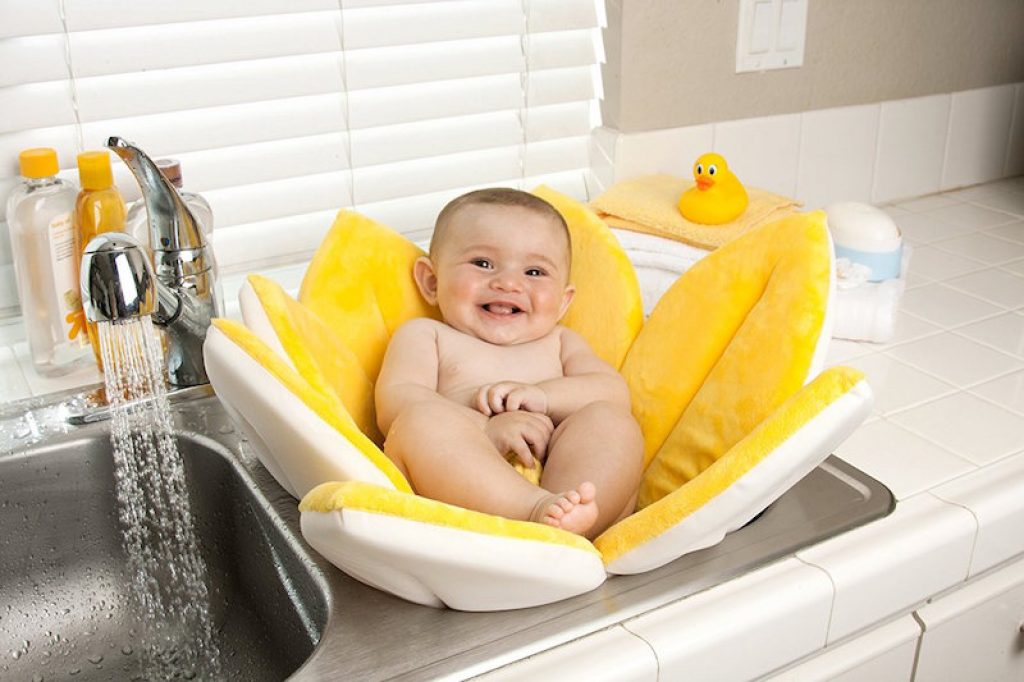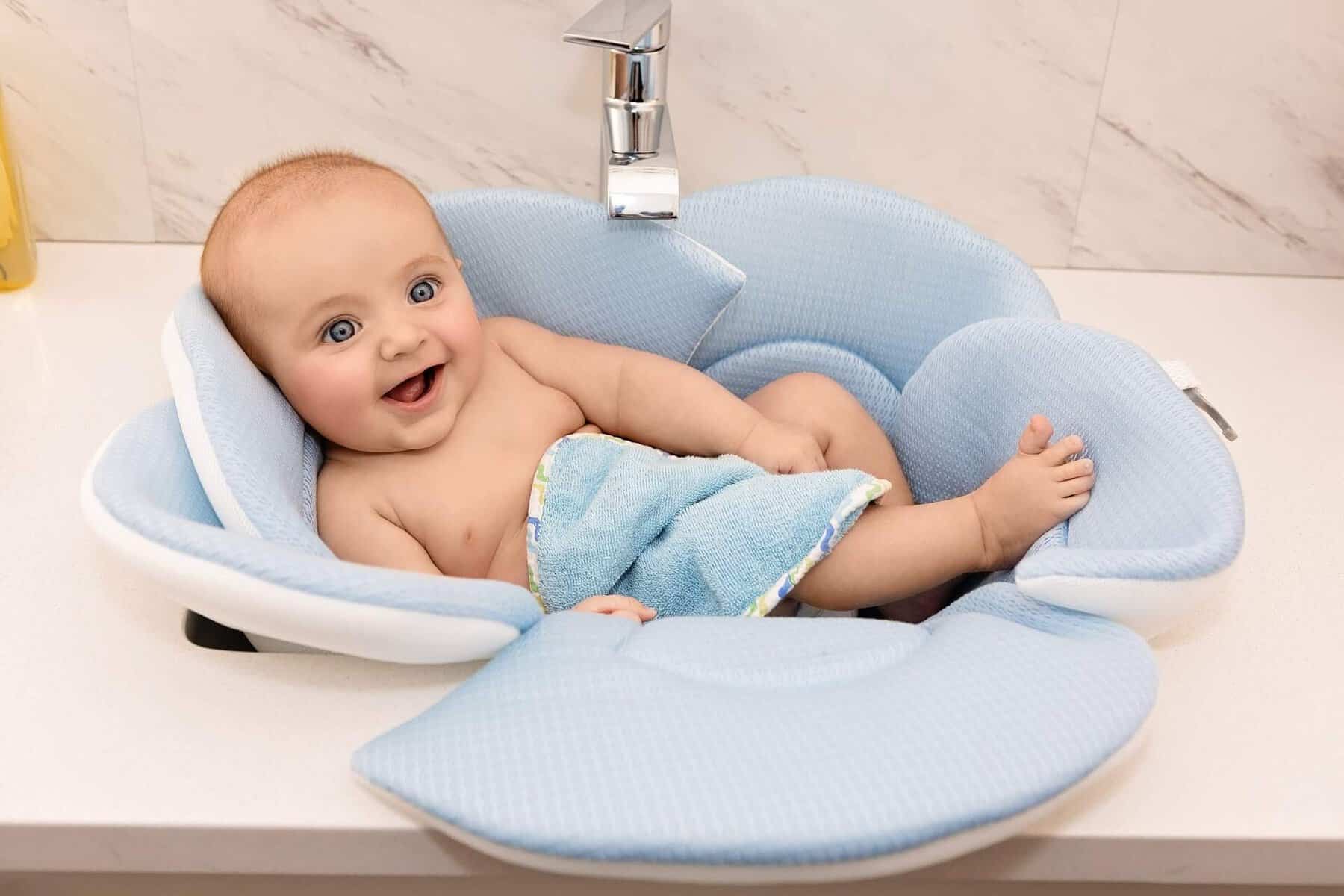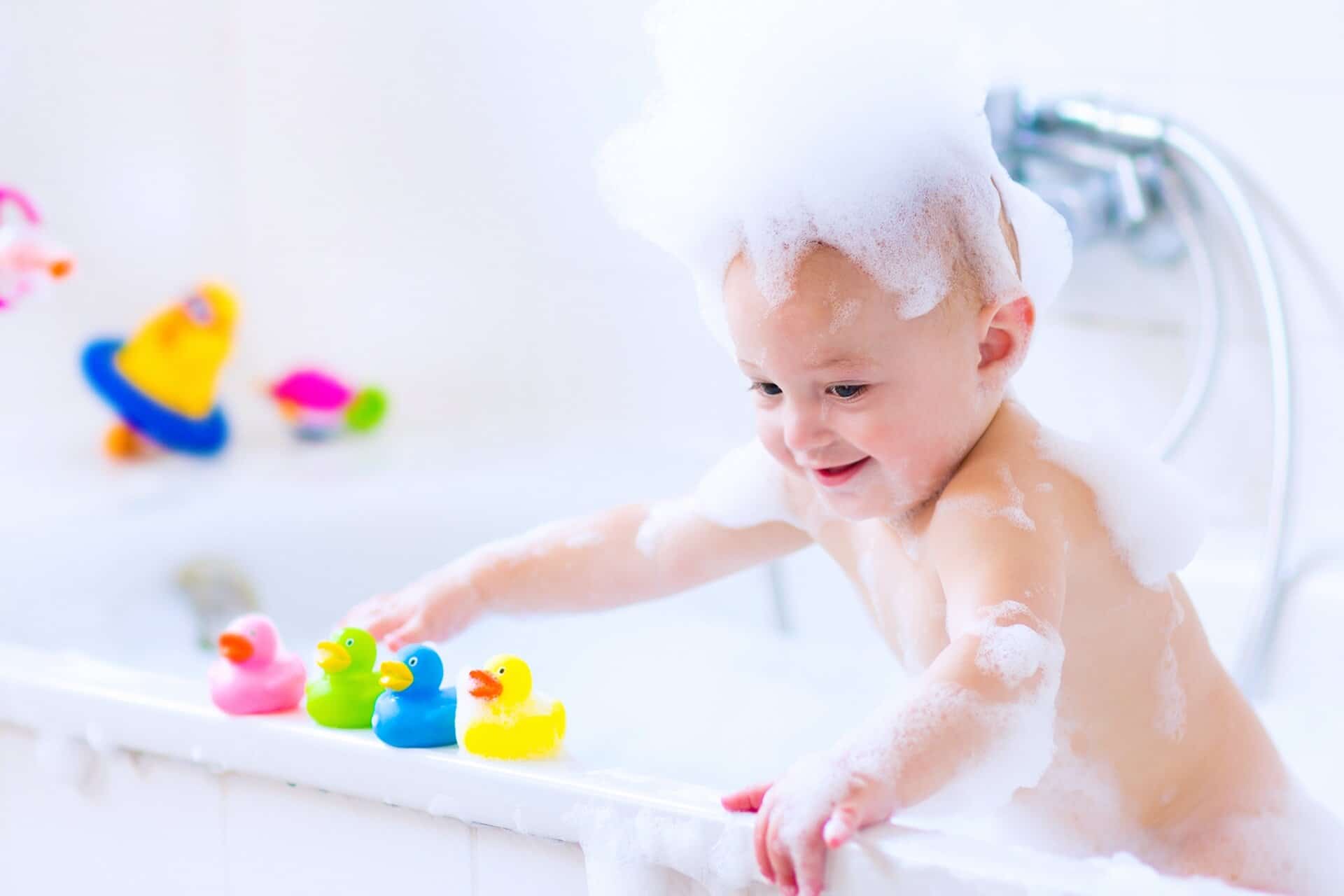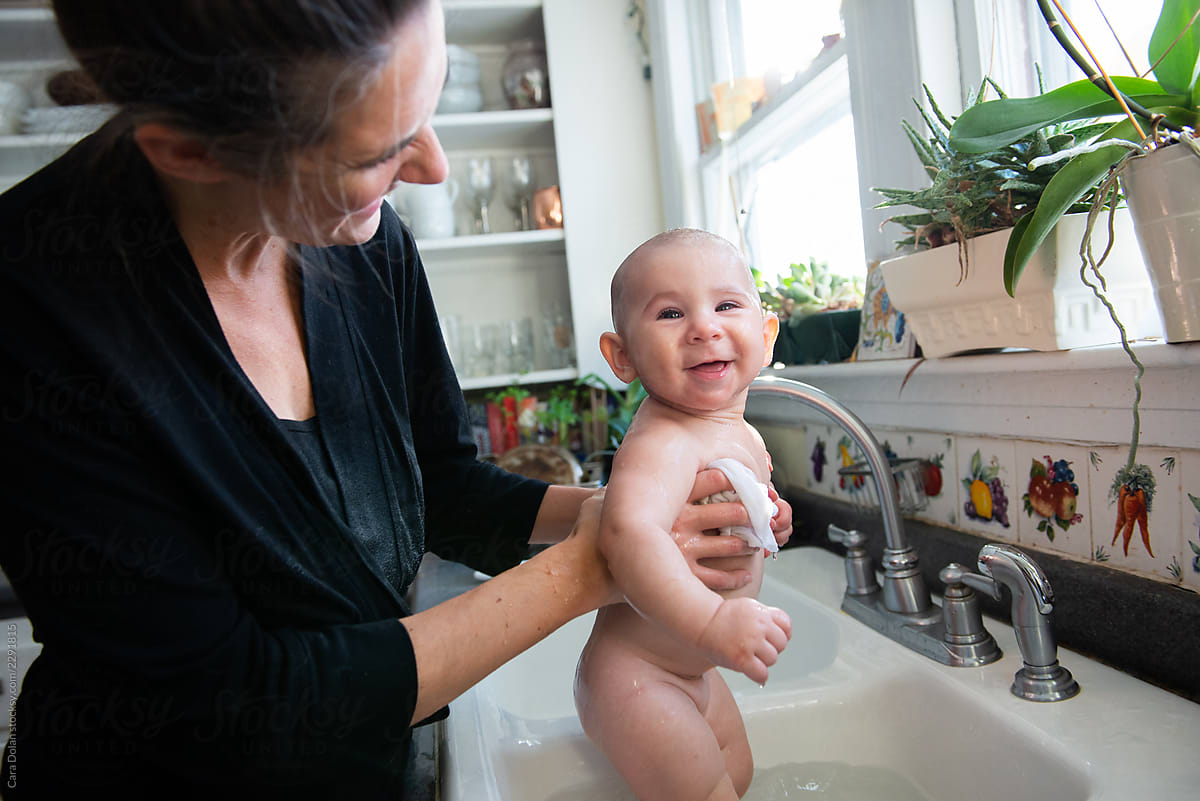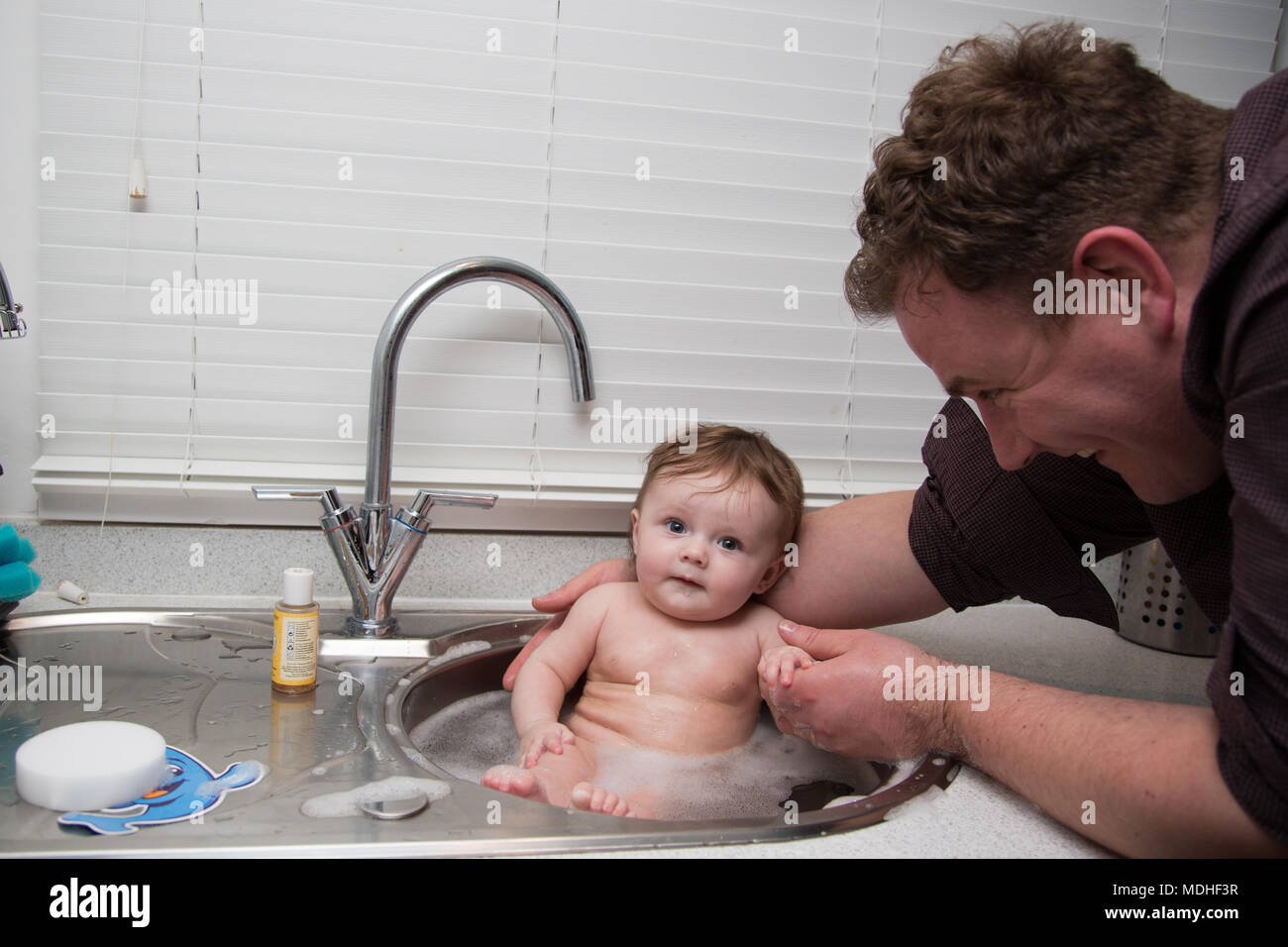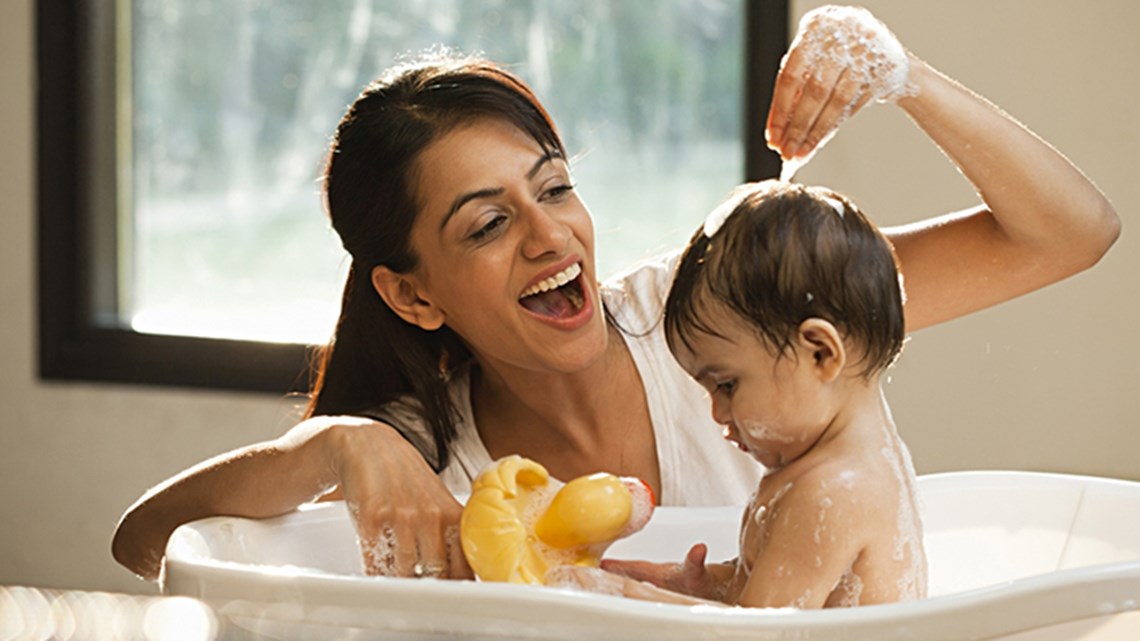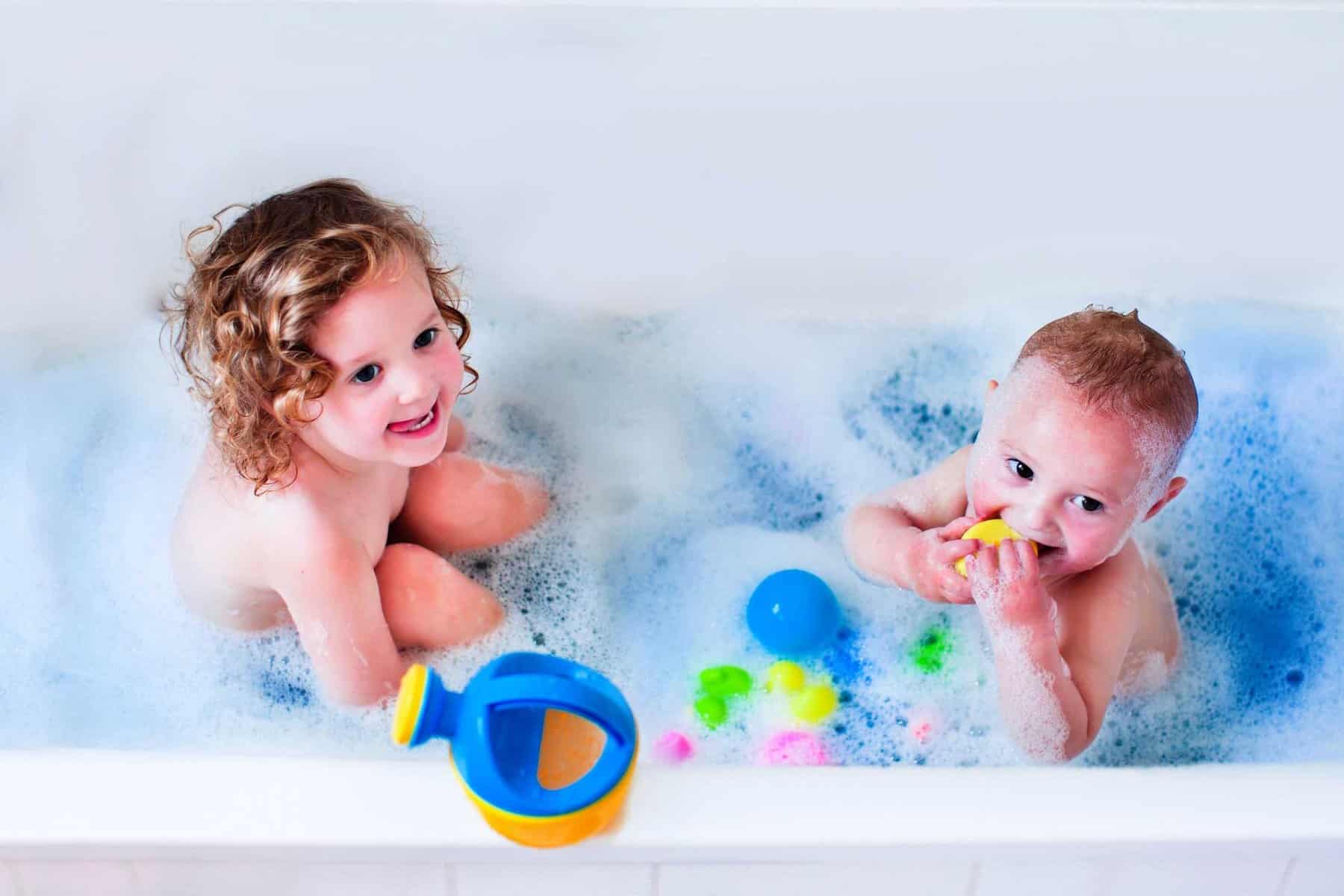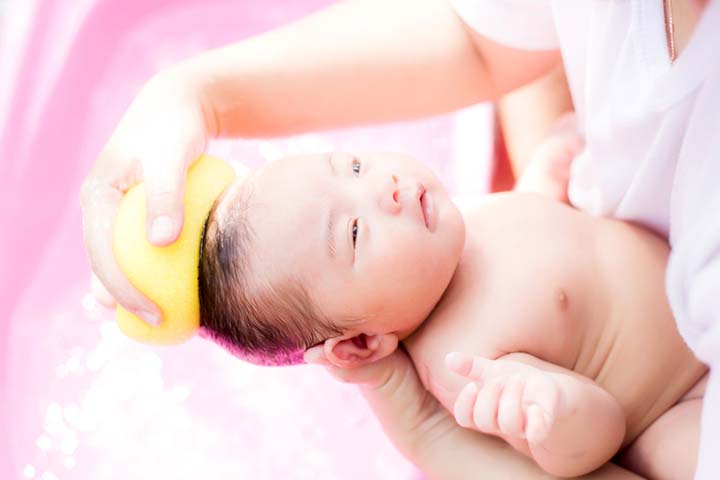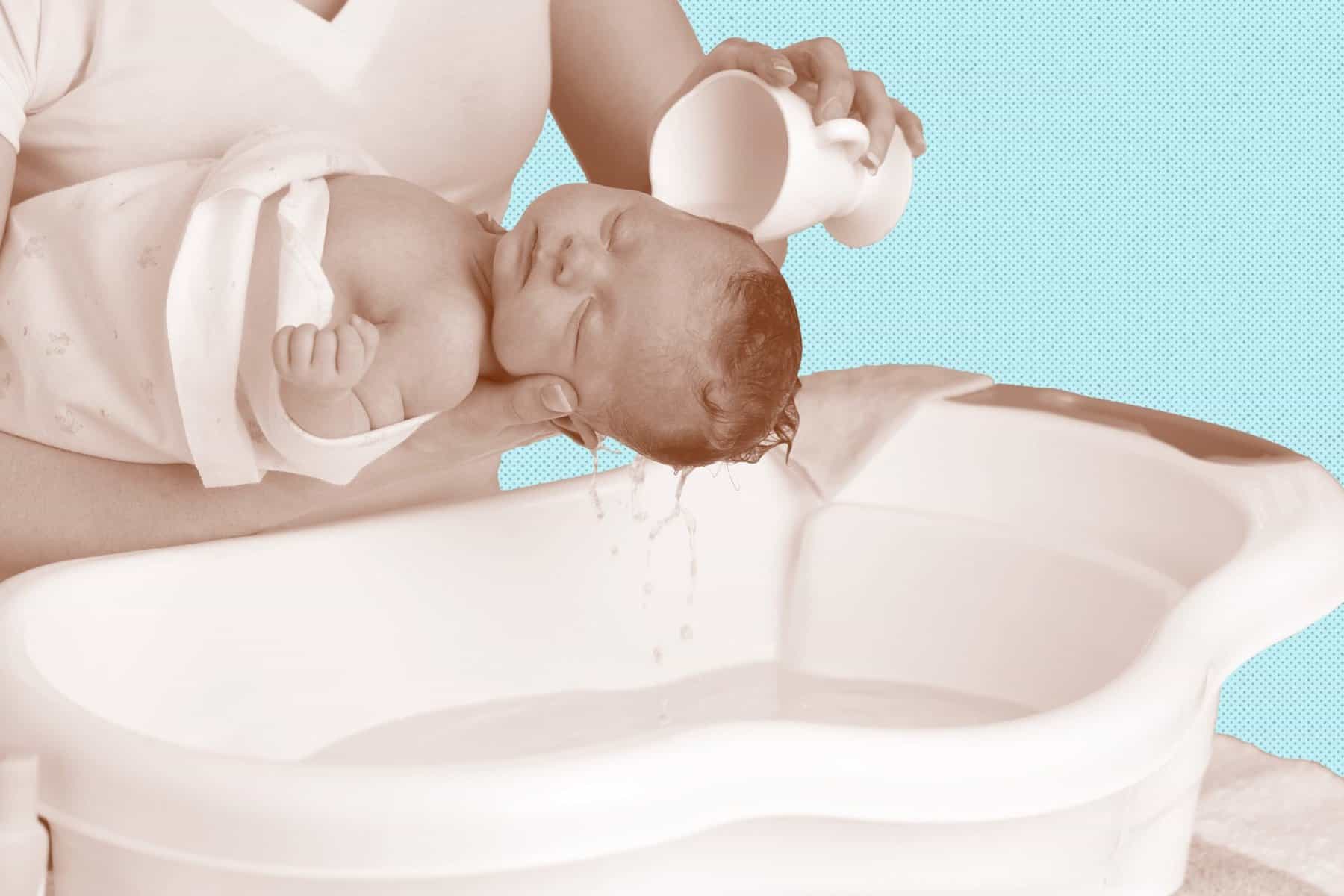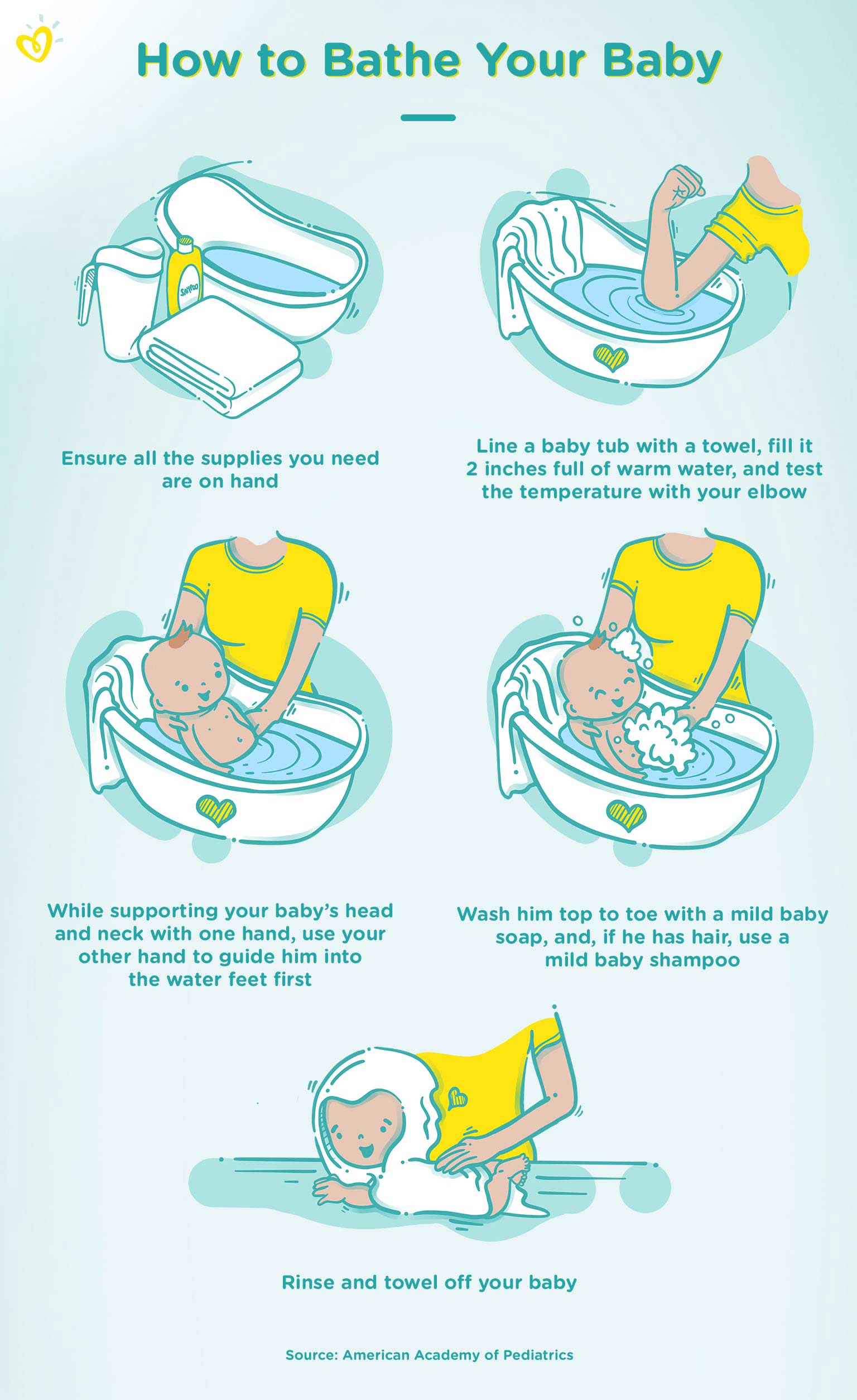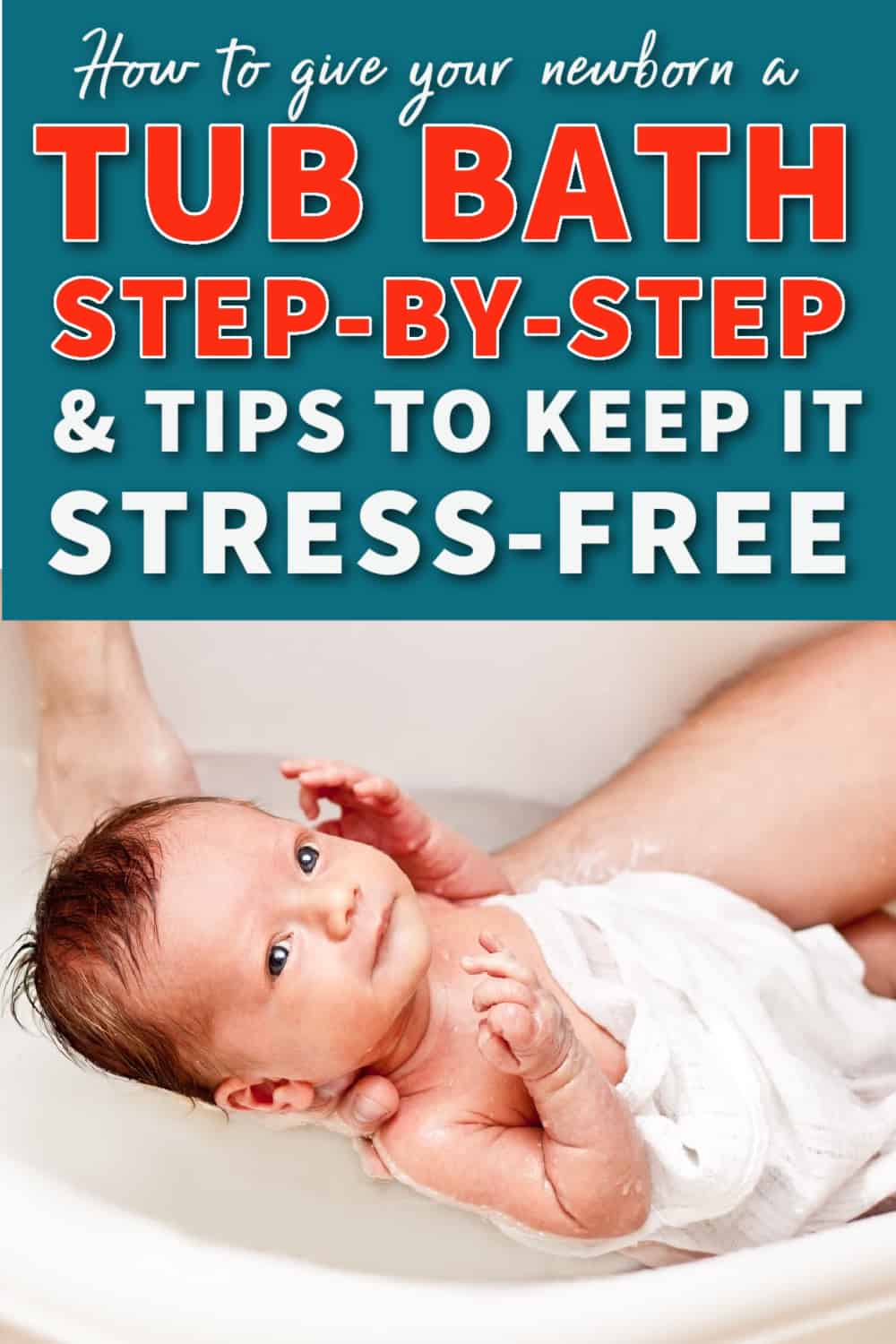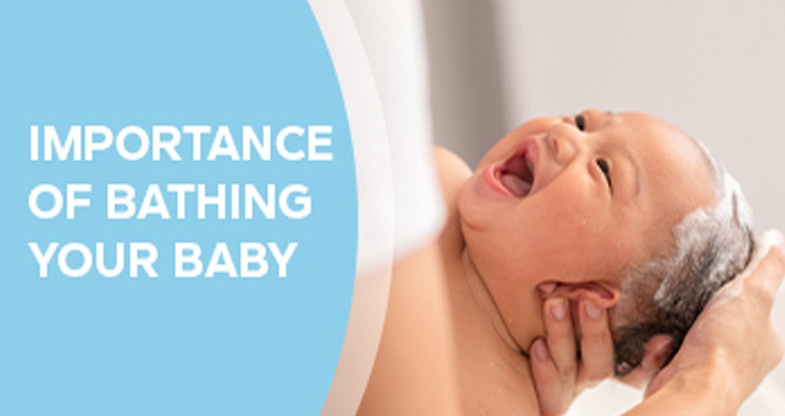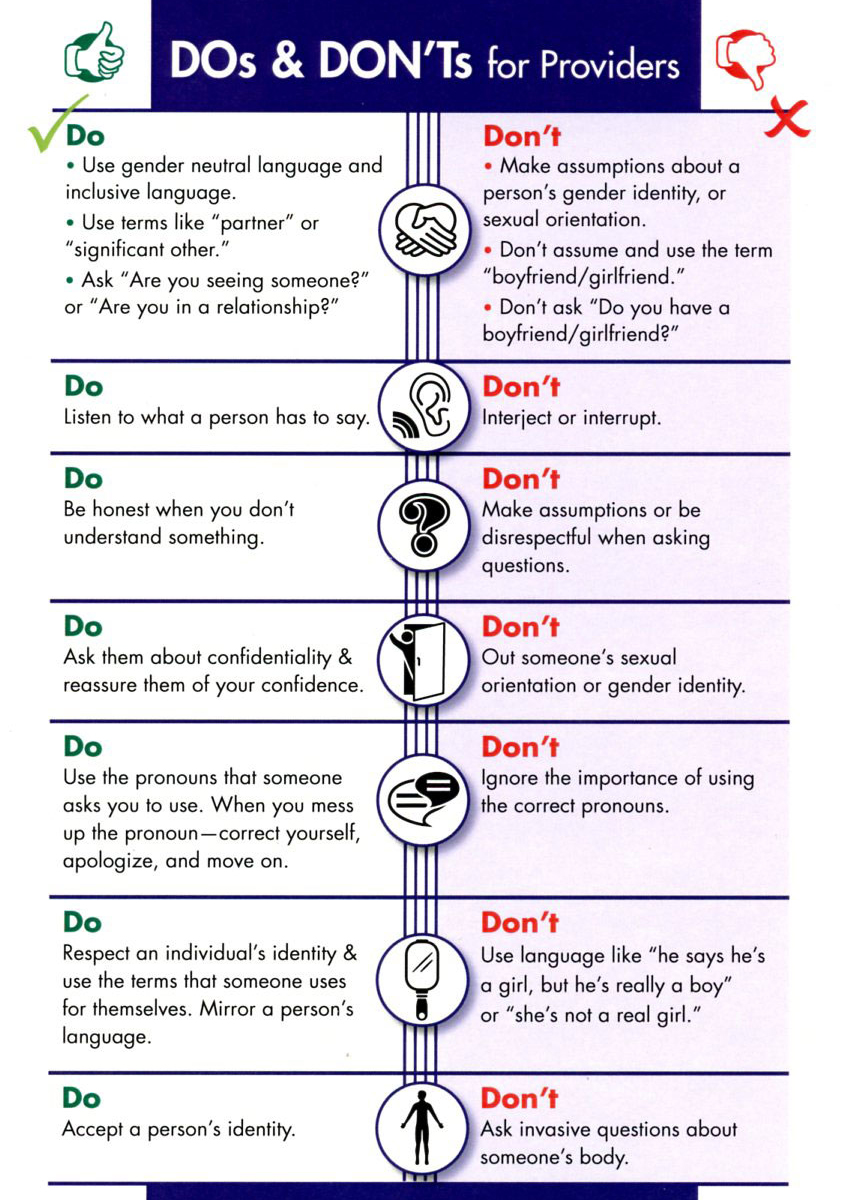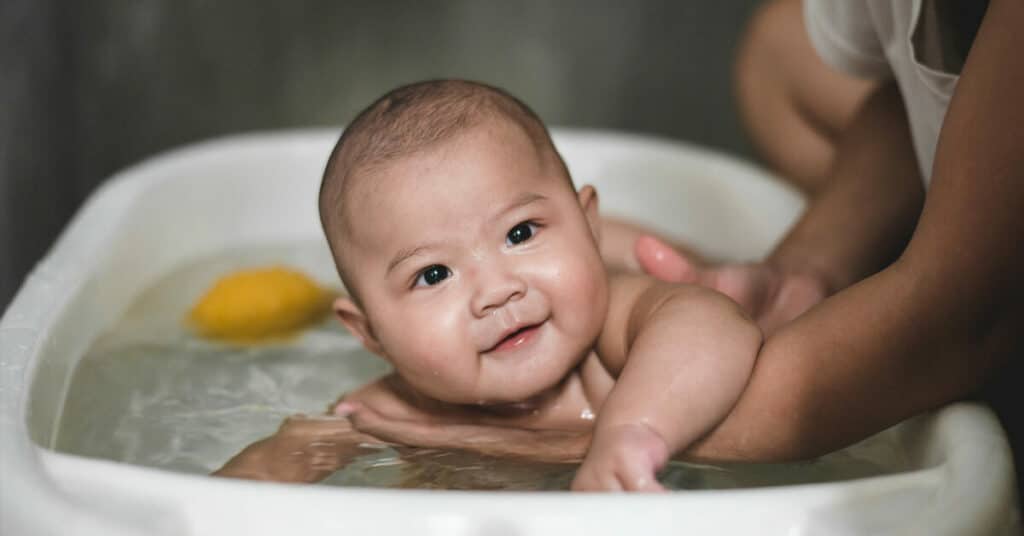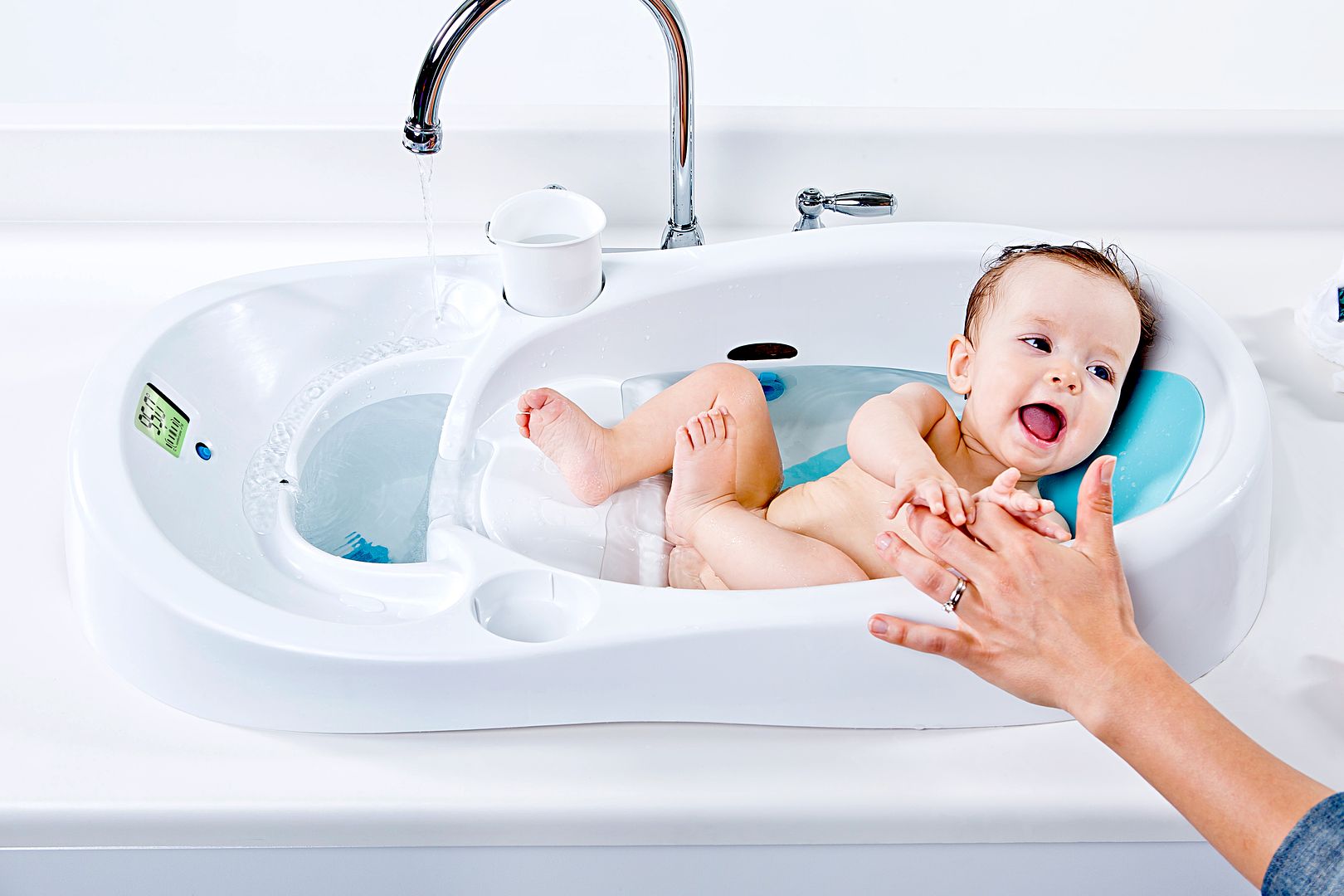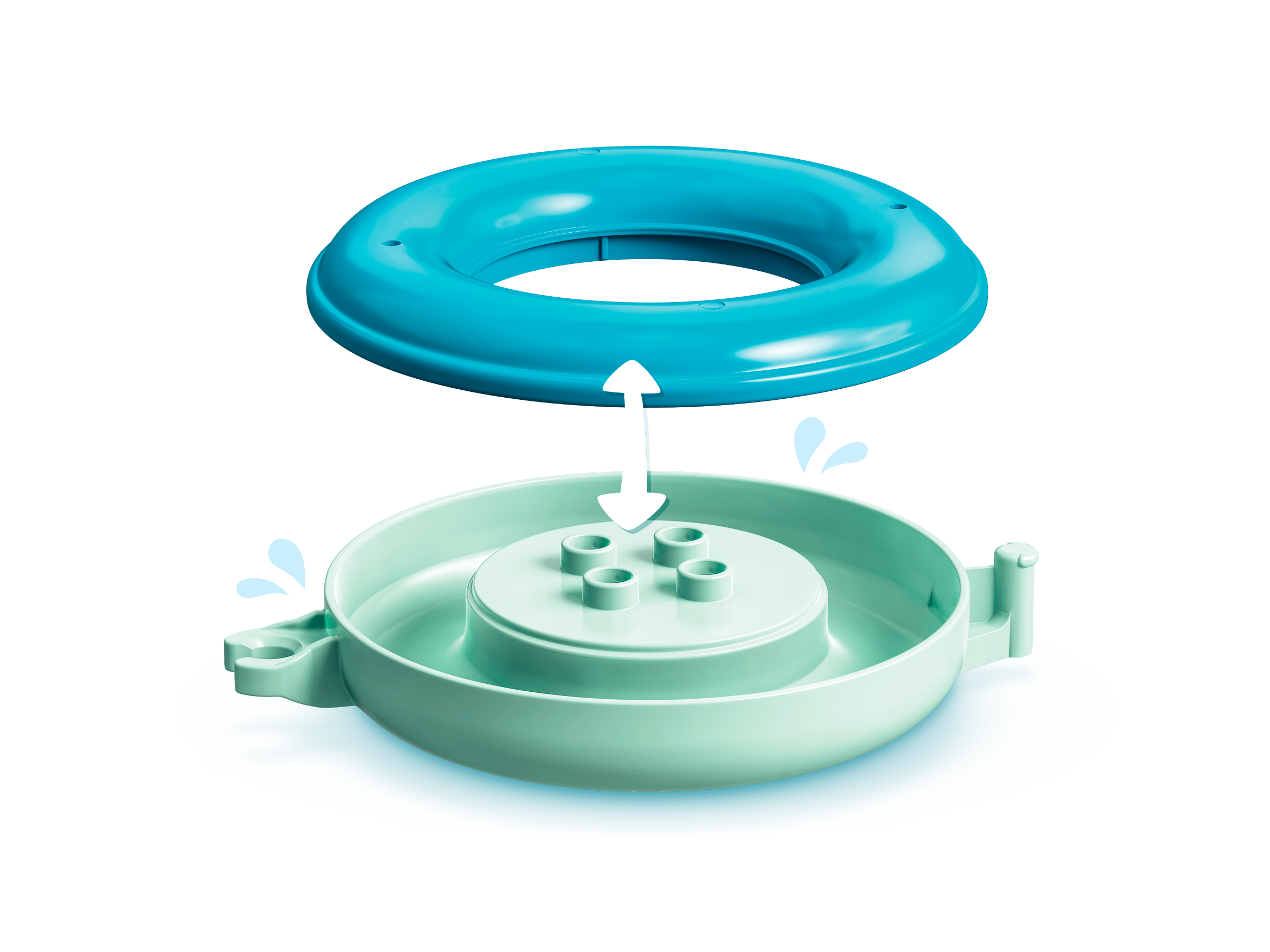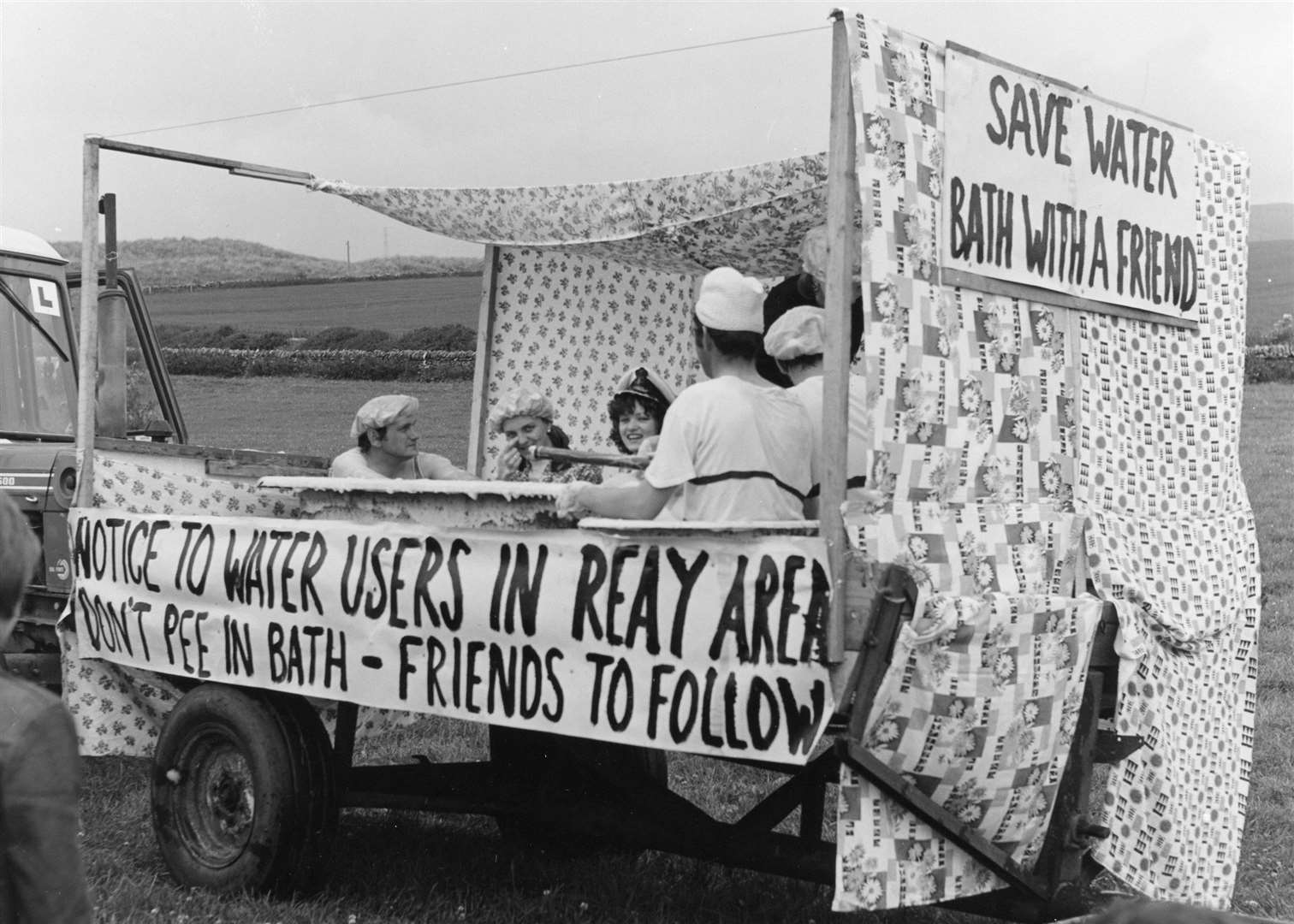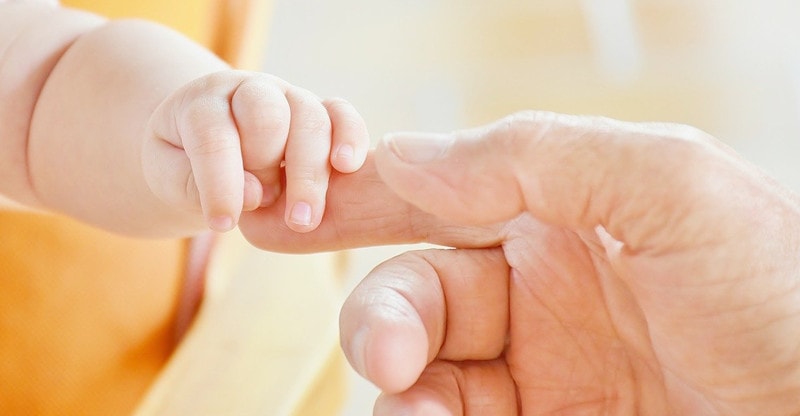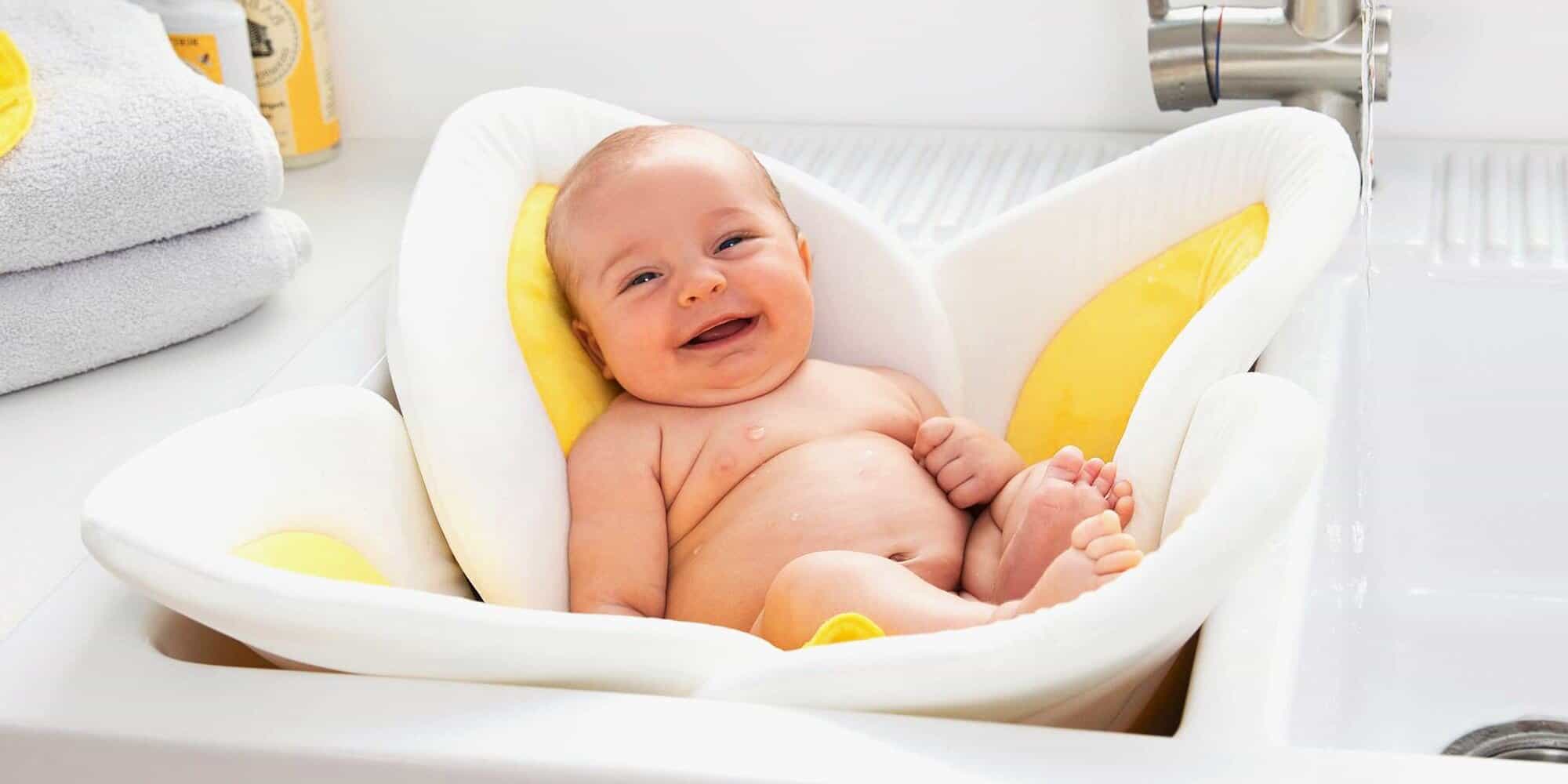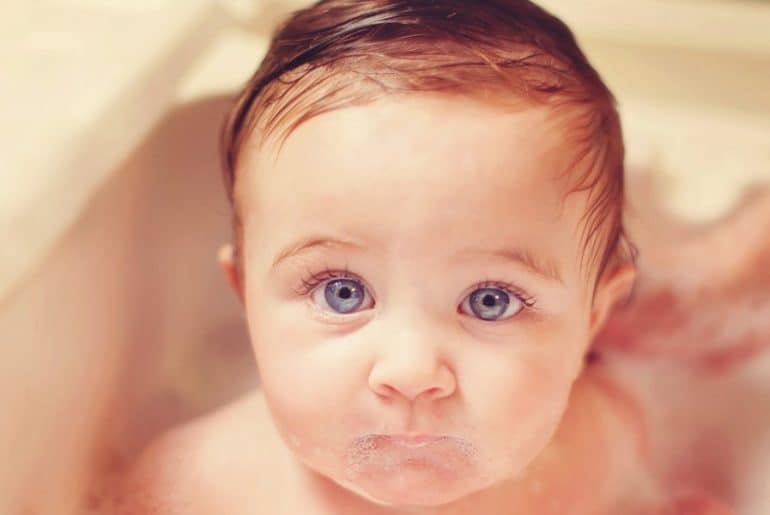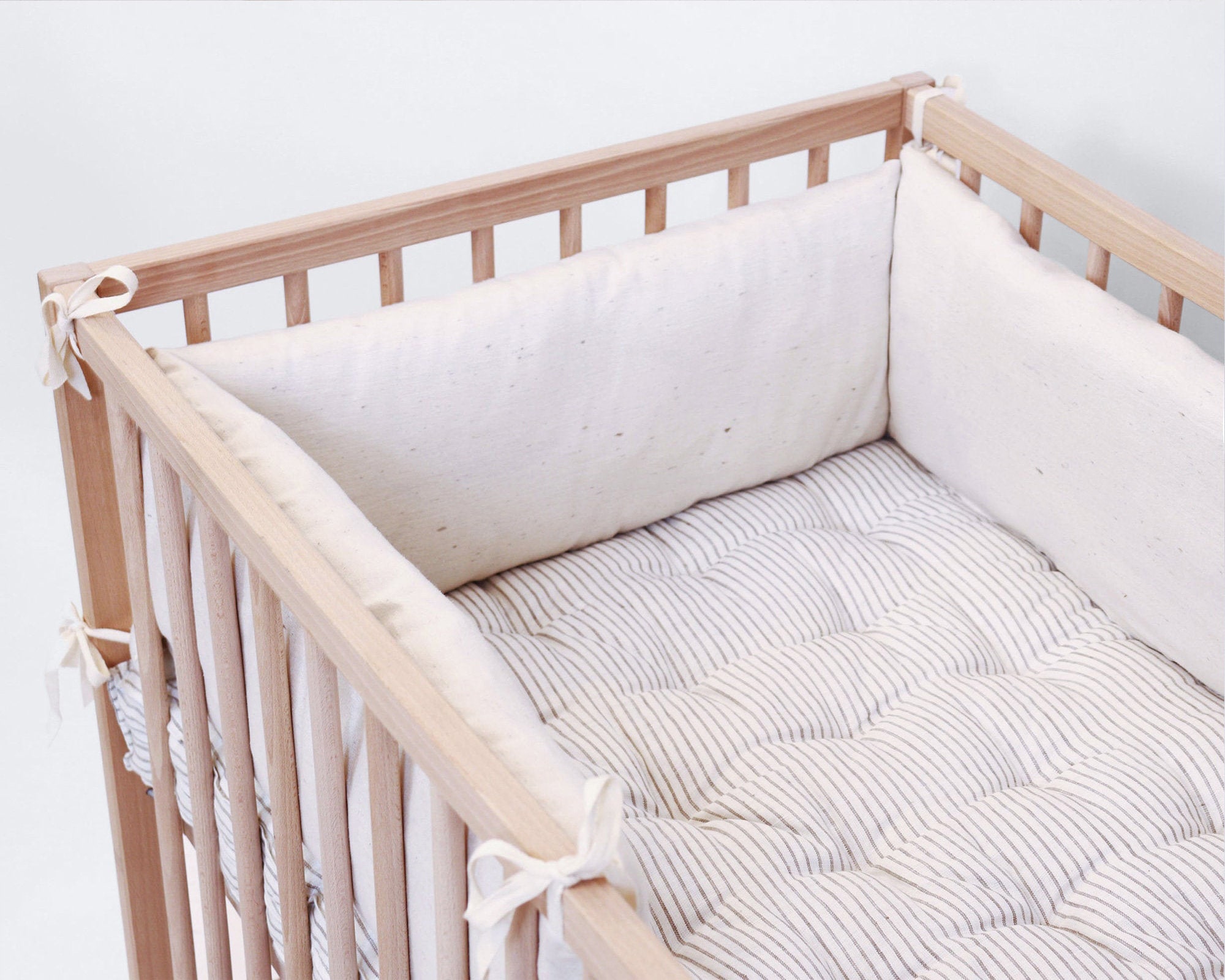Bathing your baby in the kitchen sink can be a convenient and enjoyable experience for both you and your little one. However, it is important to take proper precautions to ensure their safety and comfort. Here are some essential safety tips to keep in mind before giving your baby a bath in the kitchen sink. Always have a spotter. It is crucial to have someone present to watch the baby at all times during the bath, even if you think they are secure in the sink. Babies can be very wiggly and can easily slip or turn in the water. Having a spotter can help prevent any accidents. Use a bath mat or towel. Placing a non-slip bath mat or towel in the bottom of the sink can help prevent your baby from sliding around. This will also provide a soft and comfortable surface for them to lay on. Check the water temperature. Before placing your baby in the sink, make sure the water is at a safe and comfortable temperature. The ideal temperature for a baby's bath is around 100 degrees Fahrenheit. You can use a bath thermometer or your elbow to test the water. Keep supplies within reach. It is important to have all your bath supplies within arm's reach before starting the bath. This includes soap, shampoo, washcloths, and a towel. This way, you won't have to leave your baby unattended to grab something you forgot.1. Safety Tips for Bathing Your Baby in the Kitchen Sink
Now that you know the safety tips, let's dive into the steps on how to bathe your baby in the kitchen sink. Step 1: Gather your supplies. As mentioned earlier, make sure you have all your bath supplies within reach. This will make the bath process smoother and safer for your baby. Step 2: Fill the sink with warm water. Fill the sink with a few inches of warm water. Remember to always check the water temperature before placing your baby in the sink. Step 3: Undress your baby. Gently undress your baby and lay them on a soft towel or bath mat next to the sink. Step 4: Support your baby's head and neck. With one hand, gently support your baby's head and neck while using the other hand to wash them. Step 5: Use a gentle soap. Use a mild and gentle soap specifically designed for babies. Make sure to lather your hands and wash your baby's body gently, avoiding their eyes and face. Step 6: Rinse thoroughly. Use a cup or your hand to rinse off the soap from your baby's body. Make sure to remove all the soap residue to prevent any skin irritation. Step 7: Dry your baby. Gently lift your baby out of the sink and wrap them in a soft towel. Pat them dry and make sure to thoroughly dry their skin folds to prevent any moisture buildup.2. How to Safely Bathe Your Baby in the Kitchen Sink
Bathing your baby in the kitchen sink has several benefits that make it a popular choice among parents. Convenience: The kitchen sink is at the perfect height for bathing your baby, making it easier on your back and arms compared to bending over a traditional baby tub. Space-saving: If you have a small bathroom or limited space, using the kitchen sink for baths can be a great space-saving solution. Bonding time: Bathing your baby in the kitchen sink can be a special bonding time for you and your little one. It allows for close eye contact and skin-to-skin contact, which can help strengthen the bond between parent and child.3. The Benefits of Bathing Your Baby in the Kitchen Sink
Before giving your baby a bath in the kitchen sink, there are a few things you should know. Age: It is recommended to wait until your baby's umbilical cord stump falls off before giving them a bath in the sink. This typically happens within 2-3 weeks after birth. Cleanliness: It is important to regularly clean and disinfect your kitchen sink to prevent any bacteria or germs from transferring to your baby's skin. Water quality: If you have hard water, it is recommended to use filtered or bottled water for your baby's bath. Hard water can be harsh on their delicate skin, causing dryness and irritation.4. What You Need to Know Before Bathing Your Baby in the Kitchen Sink
Following a step-by-step guide can help make giving your baby a bath in the kitchen sink a stress-free and enjoyable experience. Step 1: Gather all your bath supplies and have them within arm's reach. Step 2: Fill the sink with warm water, making sure to check the temperature before placing your baby in the sink. Step 3: Undress your baby and lay them on a soft towel or bath mat next to the sink. Step 4: Use a gentle soap to wash your baby's body, avoiding their eyes and face. Step 5: Rinse off the soap from your baby's body using a cup or your hand. Step 6: Dry your baby off and dress them in clean clothes. Step 7: Clean and disinfect the kitchen sink after each use.5. Step-by-Step Guide to Bathing Your Baby in the Kitchen Sink
Here are some dos and don'ts to keep in mind when bathing your baby in the kitchen sink. Dos: Do use a non-slip bath mat or towel in the sink. This will help prevent your baby from sliding around and provide a soft surface for them to lay on. Do keep all bath supplies within arm's reach. This will prevent you from having to leave your baby unattended during the bath. Do check the water temperature before placing your baby in the sink. The ideal temperature for a baby's bath is around 100 degrees Fahrenheit. Do clean and disinfect the kitchen sink after each use. This will help prevent any bacteria or germs from transferring to your baby's skin. Don'ts: Don't leave your baby unattended in the sink. It is important to have someone present to watch them at all times during the bath. Don't use harsh soaps or chemicals on your baby's skin. Stick to mild and gentle baby-specific products to avoid any irritation. Don't use hot water for your baby's bath. Make sure the water is at a safe and comfortable temperature.6. The Dos and Don'ts of Bathing Your Baby in the Kitchen Sink
Bath time can be a fun and enjoyable experience for both you and your baby. Here are some tips for making bath time in the kitchen sink more enjoyable. Use bath toys: Adding some fun bath toys to the sink can make bath time more engaging and entertaining for your baby. Sing or play music: Singing or playing some soothing music can help relax your baby and make them feel more comfortable during the bath. Make it a routine: Establishing a routine for bath time can help your baby feel more at ease and anticipate the upcoming bath.7. Tips for Making Bath Time Fun in the Kitchen Sink
Ensuring your baby's safety and comfort during a kitchen sink bath is a top priority. Here are some additional tips to keep in mind. Support their head and neck: Always make sure to support your baby's head and neck with one hand while using the other hand to wash them. Check the water temperature: Before placing your baby in the sink, always check the water temperature to make sure it is safe and comfortable for them. Be gentle: Use gentle and light strokes when washing your baby's body to avoid any irritation or discomfort.8. How to Keep Your Baby Safe and Comfortable During a Kitchen Sink Bath
If you're planning to give your baby a bath in the kitchen sink, here are some essential products you may want to consider: Bath mat or towel: A non-slip bath mat or towel can help prevent your baby from sliding around in the sink. Baby-specific soap and shampoo: Stick to gentle and mild products specifically designed for babies to avoid any irritation or harsh chemicals. Baby washcloths: Soft and gentle washcloths are perfect for washing your baby's delicate skin. Bath thermometer: This will help you ensure the water temperature is safe and comfortable for your baby.9. The Best Products for Bathing Your Baby in the Kitchen Sink
If you're not comfortable with the idea of bathing your baby in the kitchen sink, there are some alternatives you can consider: Baby bathtub: A traditional baby bathtub can be a safe and convenient option for bathing your baby. Baby bath seat: A baby bath seat can be placed in a regular bathtub or large sink to provide a secure and comfortable seat for your baby. Sponge bath: For newborns or when your baby's umbilical cord stump is still attached, a sponge bath with a warm washcloth can be a gentle and safe way to clean your baby. Now that you have all the information and tips for bathing your baby in the kitchen sink, you can confidently enjoy this bonding experience with your little one. Remember to always prioritize their safety and comfort, and never leave them unattended during the bath. Happy bath time!10. Alternatives to Bathing Your Baby in the Kitchen Sink
Bathing Your Baby in the Kitchen Sink: A Safe and Convenient Option
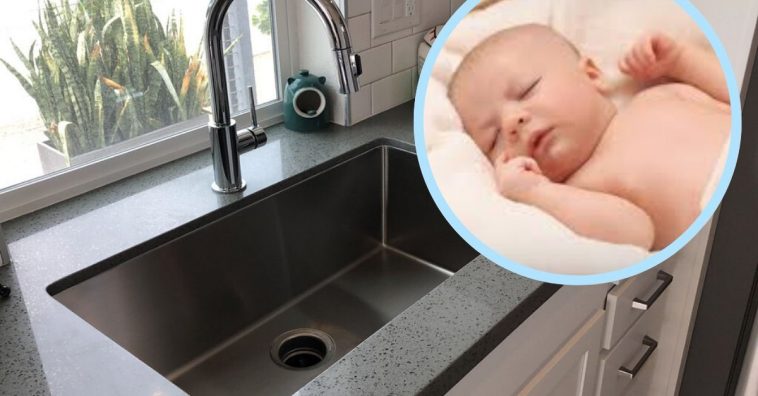
Why Choose the Kitchen Sink?
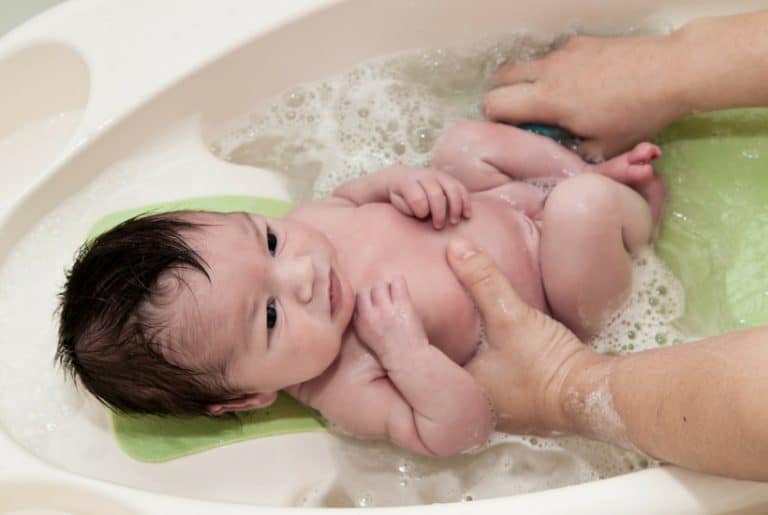 For new parents, the thought of bathing their baby for the first time can be daunting. With so many options available, it can be overwhelming to decide where to bathe your little one. While most parents may think of a traditional baby bathtub, the kitchen sink can also be a great option for bath time. Not only is it convenient, but it can also provide a safe and comfortable environment for your baby's bath.
For new parents, the thought of bathing their baby for the first time can be daunting. With so many options available, it can be overwhelming to decide where to bathe your little one. While most parents may think of a traditional baby bathtub, the kitchen sink can also be a great option for bath time. Not only is it convenient, but it can also provide a safe and comfortable environment for your baby's bath.
The Convenience of the Kitchen Sink
 One of the main advantages of using the kitchen sink for your baby's bath is its convenience. Most new parents are already spending a lot of time in the kitchen, preparing meals and cleaning dishes. With the sink being within arm's reach, it eliminates the need to carry a heavy baby bathtub around the house. This can be especially helpful for parents who have had a cesarean section or those who may have difficulty bending or lifting.
One of the main advantages of using the kitchen sink for your baby's bath is its convenience. Most new parents are already spending a lot of time in the kitchen, preparing meals and cleaning dishes. With the sink being within arm's reach, it eliminates the need to carry a heavy baby bathtub around the house. This can be especially helpful for parents who have had a cesarean section or those who may have difficulty bending or lifting.
Safety First
 When it comes to your baby's bath, safety should always be the top priority. With the kitchen sink, you can easily control the water temperature and ensure it is not too hot or too cold for your baby. Additionally, the sink's shape and size provide a secure and snug space for your baby to sit or lie down during the bath. This can also make it easier for parents to wash and rinse their baby without having to constantly support them.
When it comes to your baby's bath, safety should always be the top priority. With the kitchen sink, you can easily control the water temperature and ensure it is not too hot or too cold for your baby. Additionally, the sink's shape and size provide a secure and snug space for your baby to sit or lie down during the bath. This can also make it easier for parents to wash and rinse their baby without having to constantly support them.
Keeping it Clean
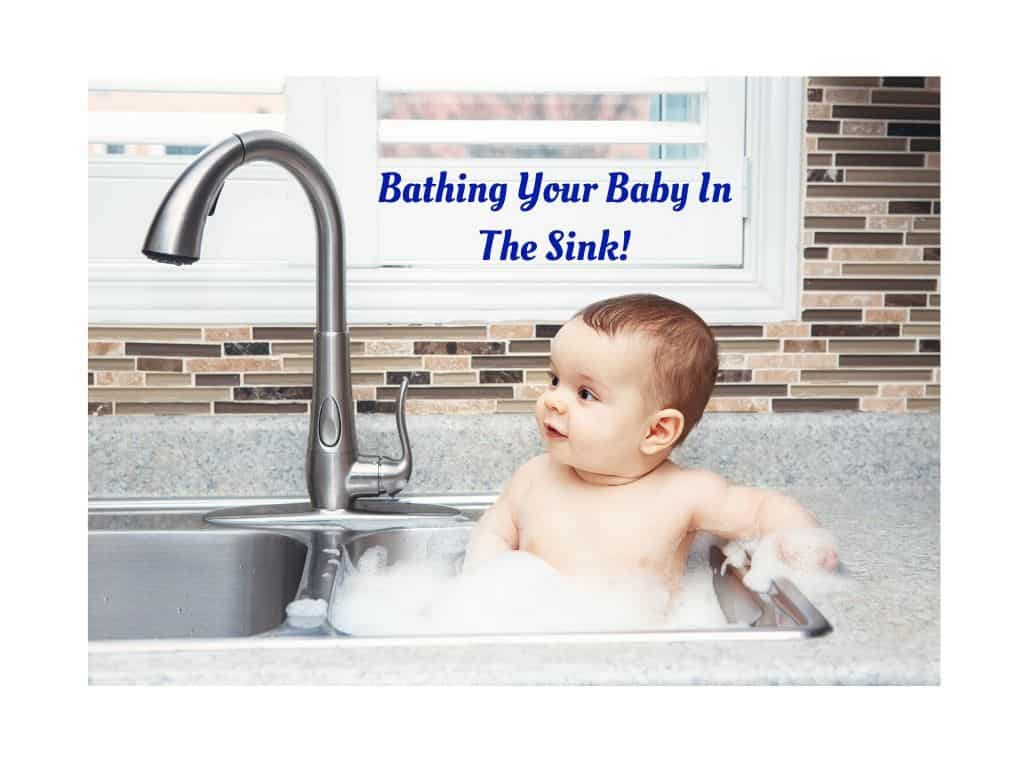 Another benefit of using the kitchen sink for your baby's bath is the ease of cleaning. With a traditional baby bathtub, you may have to bend over and reach into different crevices to clean it. However, the kitchen sink can easily be cleaned with a quick wipe down after each use. It also eliminates the need to store a bulky bathtub, freeing up valuable space in your home.
In conclusion,
the kitchen sink can be a great option for bathing your baby. It offers convenience, safety, and easy cleaning, making it a practical choice for new parents. Just remember to always supervise your baby during bath time and never leave them unattended. With these tips in mind, you can feel confident in using the kitchen sink as a safe and comfortable spot for your baby's baths.
Convert the content to HTML code:
Another benefit of using the kitchen sink for your baby's bath is the ease of cleaning. With a traditional baby bathtub, you may have to bend over and reach into different crevices to clean it. However, the kitchen sink can easily be cleaned with a quick wipe down after each use. It also eliminates the need to store a bulky bathtub, freeing up valuable space in your home.
In conclusion,
the kitchen sink can be a great option for bathing your baby. It offers convenience, safety, and easy cleaning, making it a practical choice for new parents. Just remember to always supervise your baby during bath time and never leave them unattended. With these tips in mind, you can feel confident in using the kitchen sink as a safe and comfortable spot for your baby's baths.
Convert the content to HTML code:
Bathing Your Baby in the Kitchen Sink: A Safe and Convenient Option
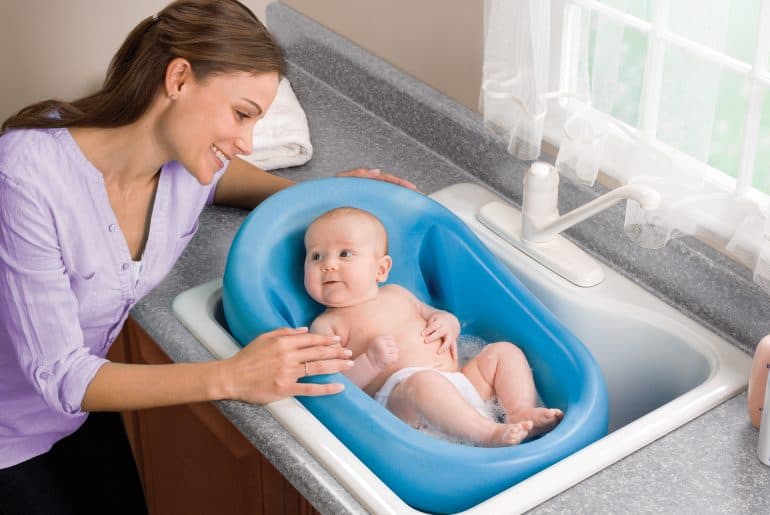
Why Choose the Kitchen Sink?
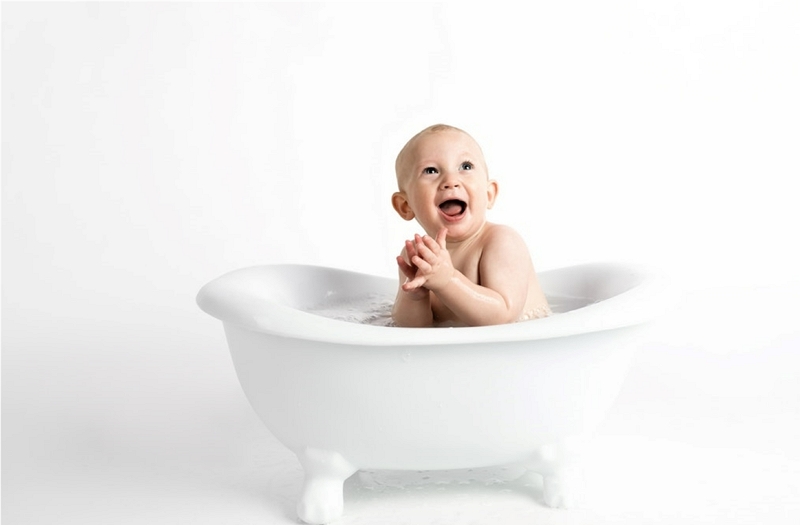
For new parents, the thought of bathing their baby for the first time can be daunting. With so many options available, it can be overwhelming to decide where to bathe your little one. While most parents may think of a traditional baby bathtub, the kitchen sink can also be a great option for bath time. Not only is it convenient, but it can also provide a safe and comfortable environment for your baby's bath.
The Convenience of the Kitchen Sink

One of the main advantages of using the kitchen sink for your baby's bath is its convenience. Most new parents are already spending a lot of time in the kitchen, preparing meals and cleaning dishes. With the sink being within arm's reach, it eliminates the need to carry a heavy baby bathtub around the house. This can be especially helpful for parents who have had a cesarean section or those who may have difficulty bending or lifting.
Safety First
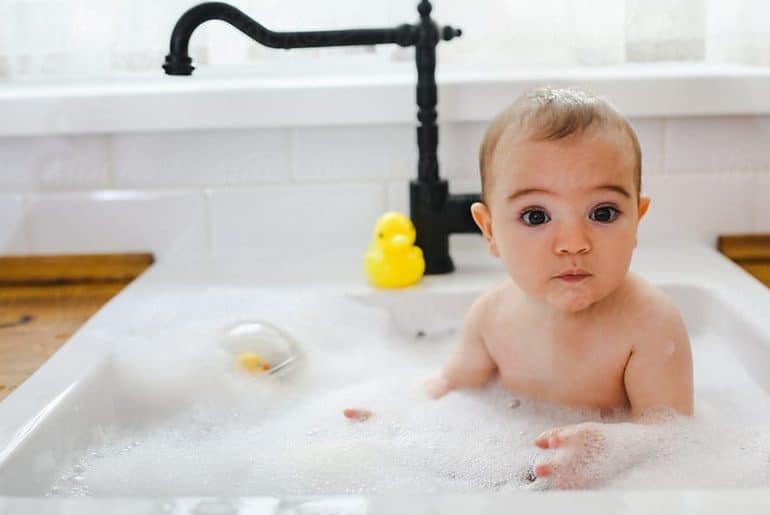
When it comes to your baby's bath, safety should always be the top priority. With the kitchen sink, you can easily control the water temperature and ensure it is not too hot or too cold for your baby. Additionally, the sink's shape and size provide a secure and snug space for your baby to sit or lie down during the bath. This can also make it easier for parents to wash and rinse their baby without having to constantly support them.
Keeping it Clean
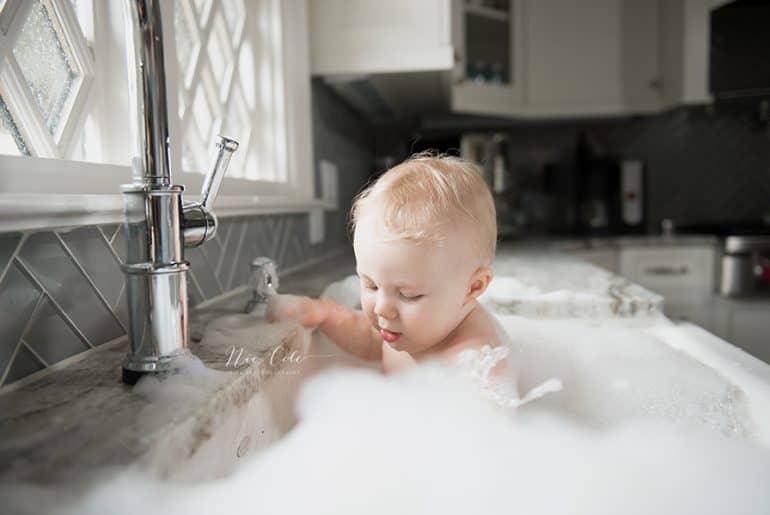
Another benefit of using the kitchen sink for your baby's bath is the ease of cleaning. With a traditional baby bathtub, you may have to bend over and reach into different crevices to clean it. However, the kitchen sink can easily be cleaned with a quick wipe down after each use. It also eliminates the need to store a bulky bathtub, freeing up valuable space in your home.
In conclusion, the kitchen sink can be a great option for bathing your baby. It offers convenience, safety, and easy cleaning, making it a practical choice for new parents. Just remember to always supervise your baby during bath time and never leave them unattended. With these tips in mind, you can feel confident in using the kitchen sink as a safe and comfortable spot for your


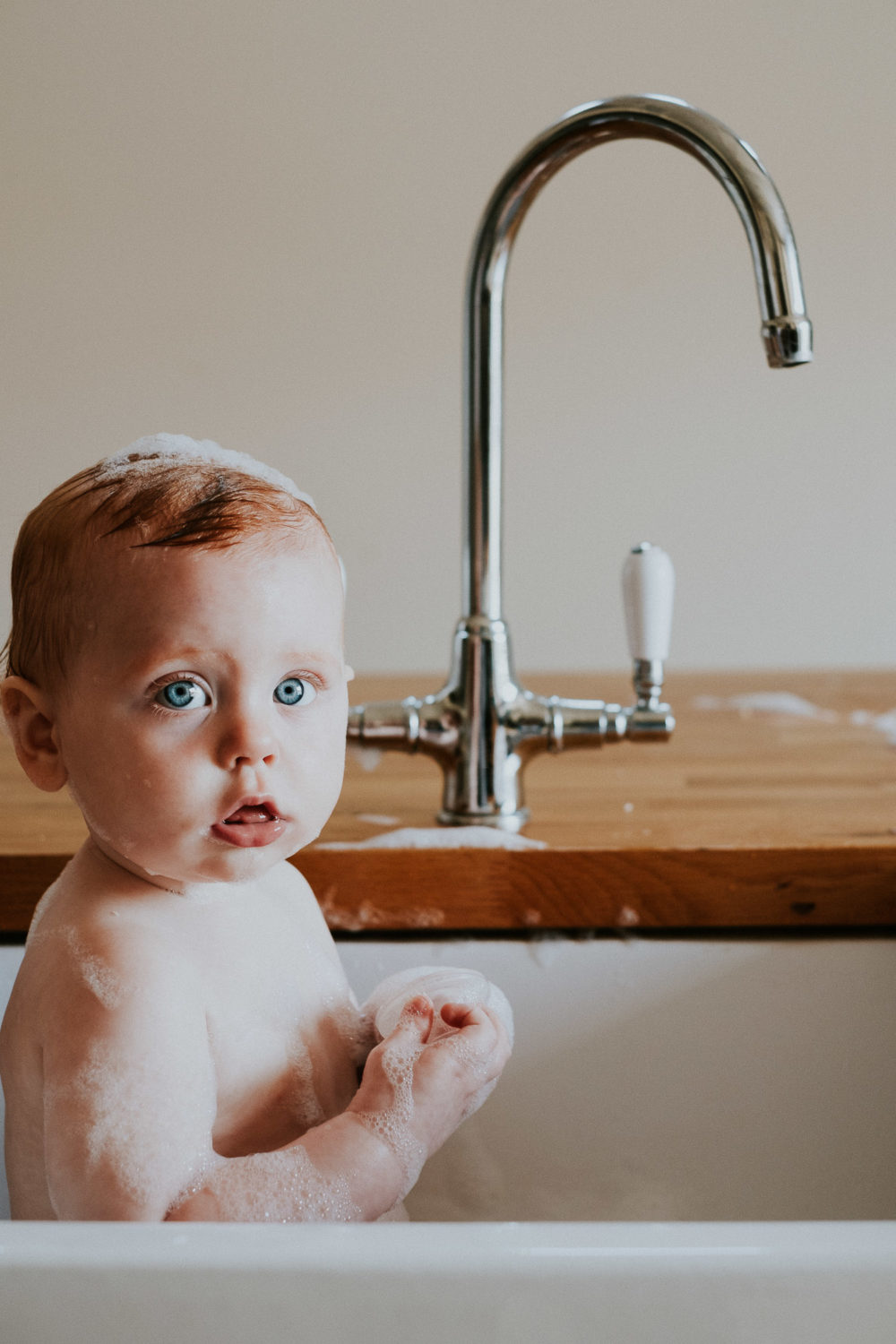
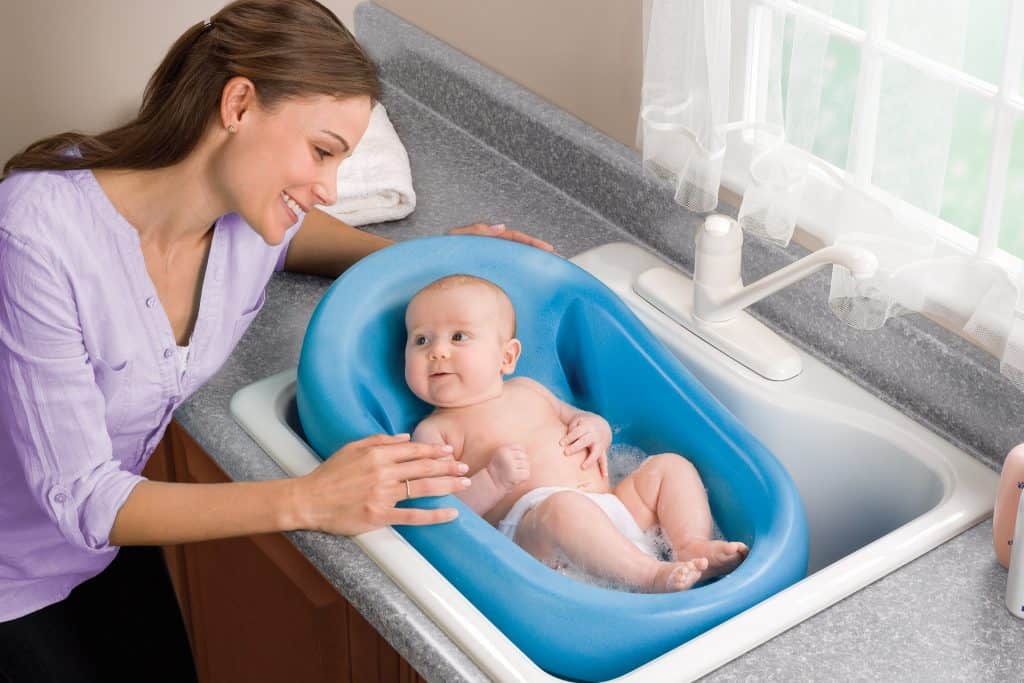


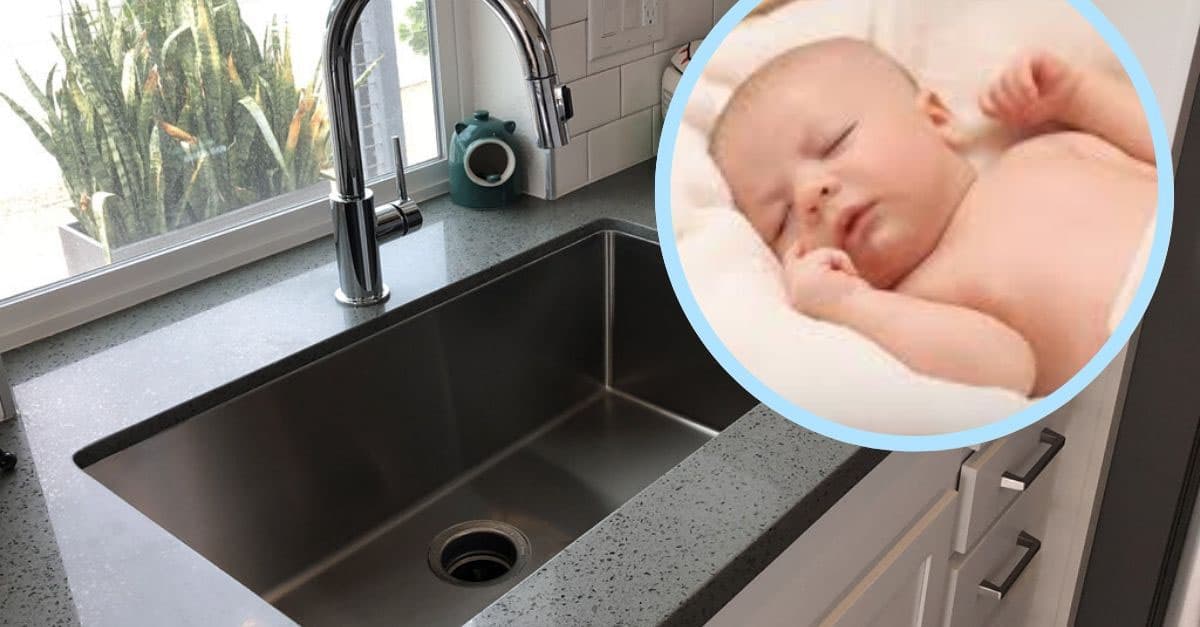

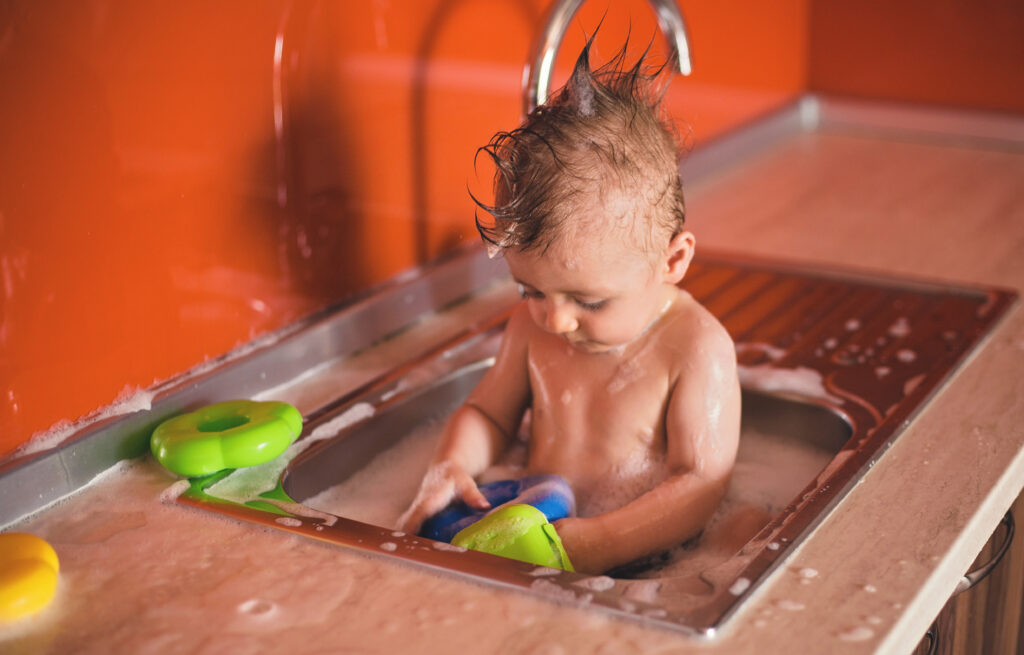



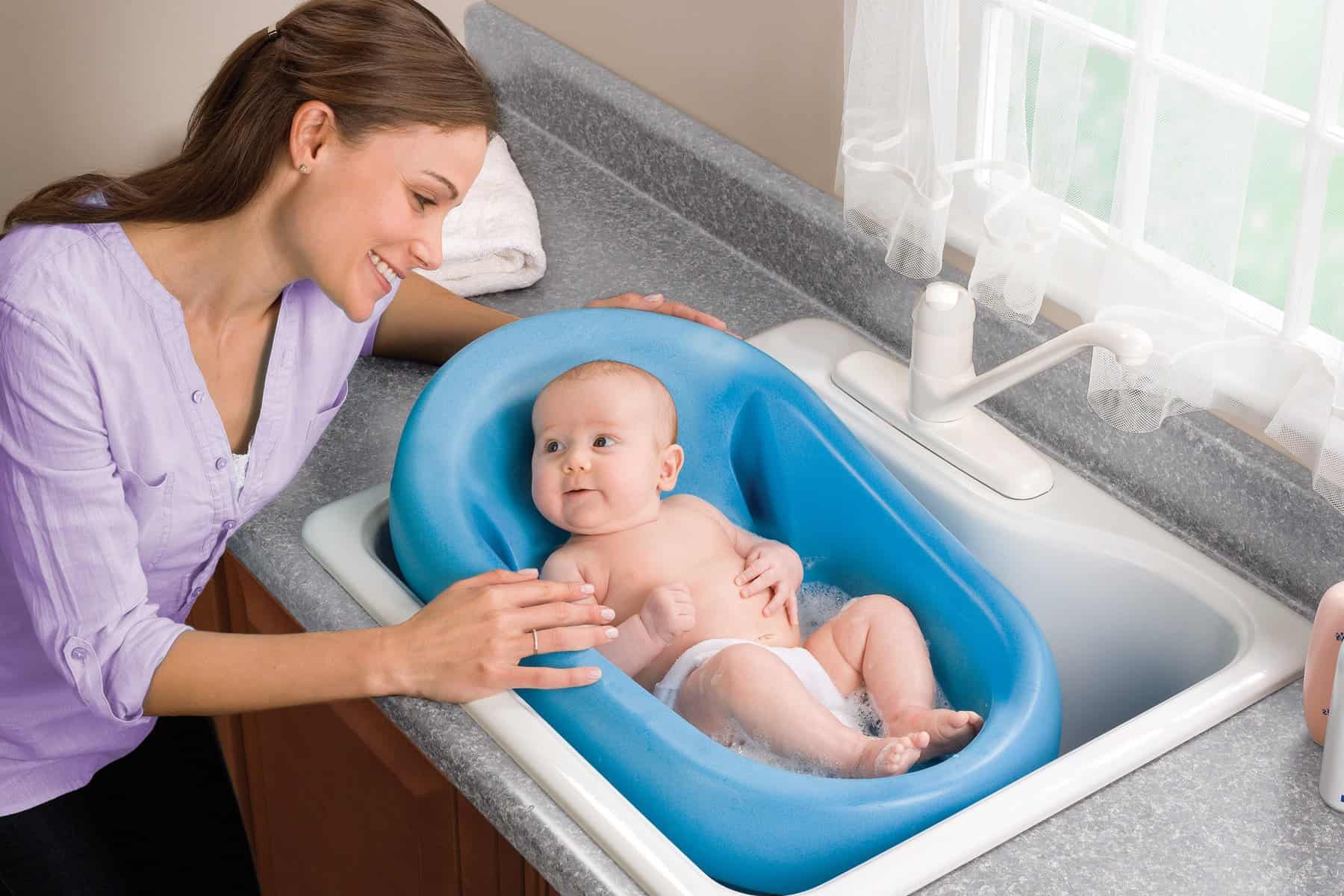
/98842092-56aafc2f3df78cf772b4b929.jpg)
